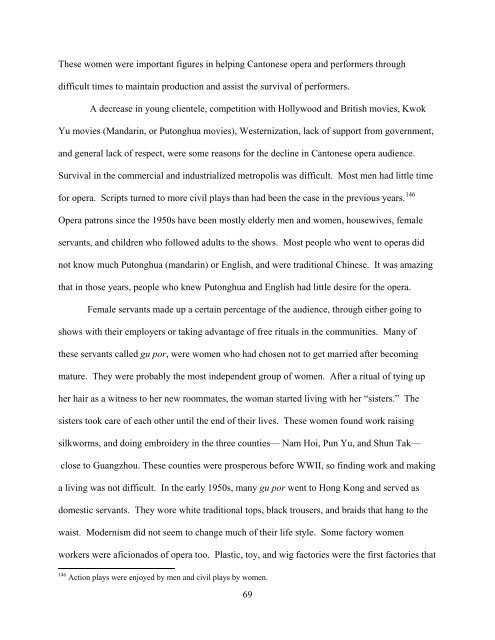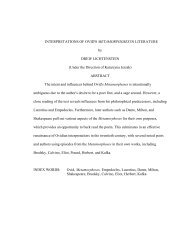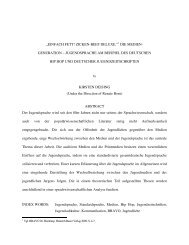RED BOAT TROUPES AND CANTONESE ... - University of Georgia
RED BOAT TROUPES AND CANTONESE ... - University of Georgia
RED BOAT TROUPES AND CANTONESE ... - University of Georgia
Create successful ePaper yourself
Turn your PDF publications into a flip-book with our unique Google optimized e-Paper software.
These women were important figures in helping Cantonese opera and performers through<br />
difficult times to maintain production and assist the survival <strong>of</strong> performers.<br />
A decrease in young clientele, competition with Hollywood and British movies, Kwok<br />
Yu movies (Mandarin, or Putonghua movies), Westernization, lack <strong>of</strong> support from government,<br />
and general lack <strong>of</strong> respect, were some reasons for the decline in Cantonese opera audience.<br />
Survival in the commercial and industrialized metropolis was difficult. Most men had little time<br />
for opera. Scripts turned to more civil plays than had been the case in the previous years. 146<br />
Opera patrons since the 1950s have been mostly elderly men and women, housewives, female<br />
servants, and children who followed adults to the shows. Most people who went to operas did<br />
not know much Putonghua (mandarin) or English, and were traditional Chinese. It was amazing<br />
that in those years, people who knew Putonghua and English had little desire for the opera.<br />
Female servants made up a certain percentage <strong>of</strong> the audience, through either going to<br />
shows with their employers or taking advantage <strong>of</strong> free rituals in the communities. Many <strong>of</strong><br />
these servants called gu por, were women who had chosen not to get married after becoming<br />
mature. They were probably the most independent group <strong>of</strong> women. After a ritual <strong>of</strong> tying up<br />
her hair as a witness to her new roommates, the woman started living with her “sisters.” The<br />
sisters took care <strong>of</strong> each other until the end <strong>of</strong> their lives. These women found work raising<br />
silkworms, and doing embroidery in the three counties— Nam Hoi, Pun Yu, and Shun Tak—<br />
close to Guangzhou. These counties were prosperous before WWII, so finding work and making<br />
a living was not difficult. In the early 1950s, many gu por went to Hong Kong and served as<br />
domestic servants. They wore white traditional tops, black trousers, and braids that hang to the<br />
waist. Modernism did not seem to change much <strong>of</strong> their life style. Some factory women<br />
workers were aficionados <strong>of</strong> opera too. Plastic, toy, and wig factories were the first factories that<br />
146 Action plays were enjoyed by men and civil plays by women.<br />
69






